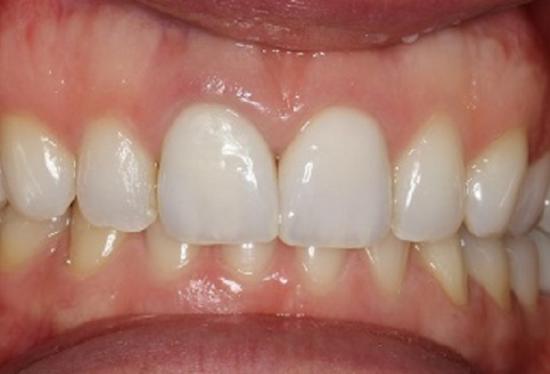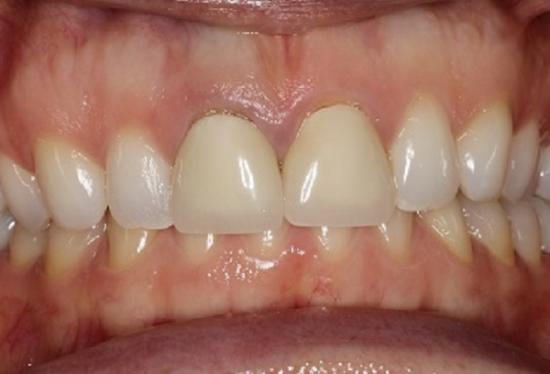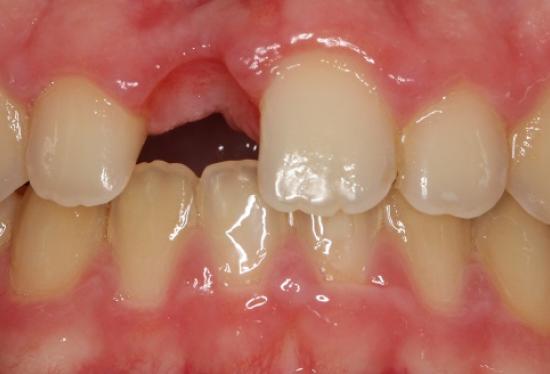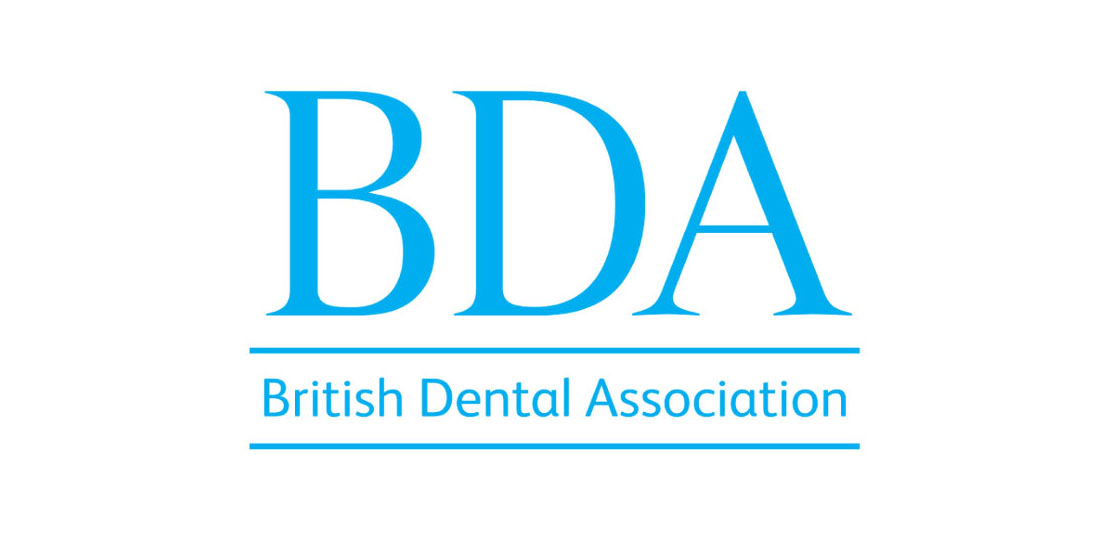Crowns
Crowns can restore beauty and function to damaged teeth. Also known as caps, they can conceal defects caused by chips, decay, discolouration or large fillings. Crowns can provide a complete restoration that blends in perfectly with your natural teeth. Ceramic crowns in particular produce near perfect aesthetic results.
Made from a variety of materials, including metal, porcelain, resin or ceramic, they can also be used to support a dental bridge or affixed to a dental implant.


Here we've used ceramic crowns to improve colour and gum line
What does the treatment involve?
Having a crown fitted needs more than one appointment. During the first appointment, we treat the area with a local anaesthetic, then remove the outer layer of the tooth structure. We make sure we leave a strong core. The amount of tooth removed depends on the thickness of the crown, which can differ depending on the material used to make it.
We take impressions of the remaining tooth and send these to the lab that will craft the custom-made crown. We provide a temporary crown to protect the post.
When the crown has been sent to us, we invite you back for your fitting. The temporary crown is removed and the new permanent one fixed in place with a strong dental cement.
Bridges
Bridges are one option for replacing a missing tooth or several missing teeth. A bridge often consists of two crowns on either side of the false tooth. The main disadvantage of a bridge is the need to use adjacent teeth as “abutments”, which involves removing some of the tissue of those teeth even if they are perfect. This is why more patients opt for alternatives such as implants, therefore preserving the integrity of the adjacent teeth.
Made from a combination of metal and ceramic or ceramic only, bridges are durable and secure. If well-looked after, they should last many years. We can also use bridges to replace multiple teeth, using implants as the support in place of abutment teeth.


Here we've used a cantilever bridge to replace the missing tooth
What does the treatment involve?
Having a bridge fitted involves multiple appointments. First, we need to assess the teeth that you’ll use as the support. We take x-rays and scans to make sure the teeth are healthy.
Using a local anaesthetic, we numb the area before removing a layer of enamel to ensure there will be sufficient room for the crowns.
We take impressions of the prepared teeth and these are sent to the lab where the bridge will be crafted. While the bridge is being made, a temporary bridge may be put in place to protect the exposed teeth.
When ready, the bridge is checked and adjusted to make sure it fits perfectly and it is finally fixed in place with strong dental cement.







